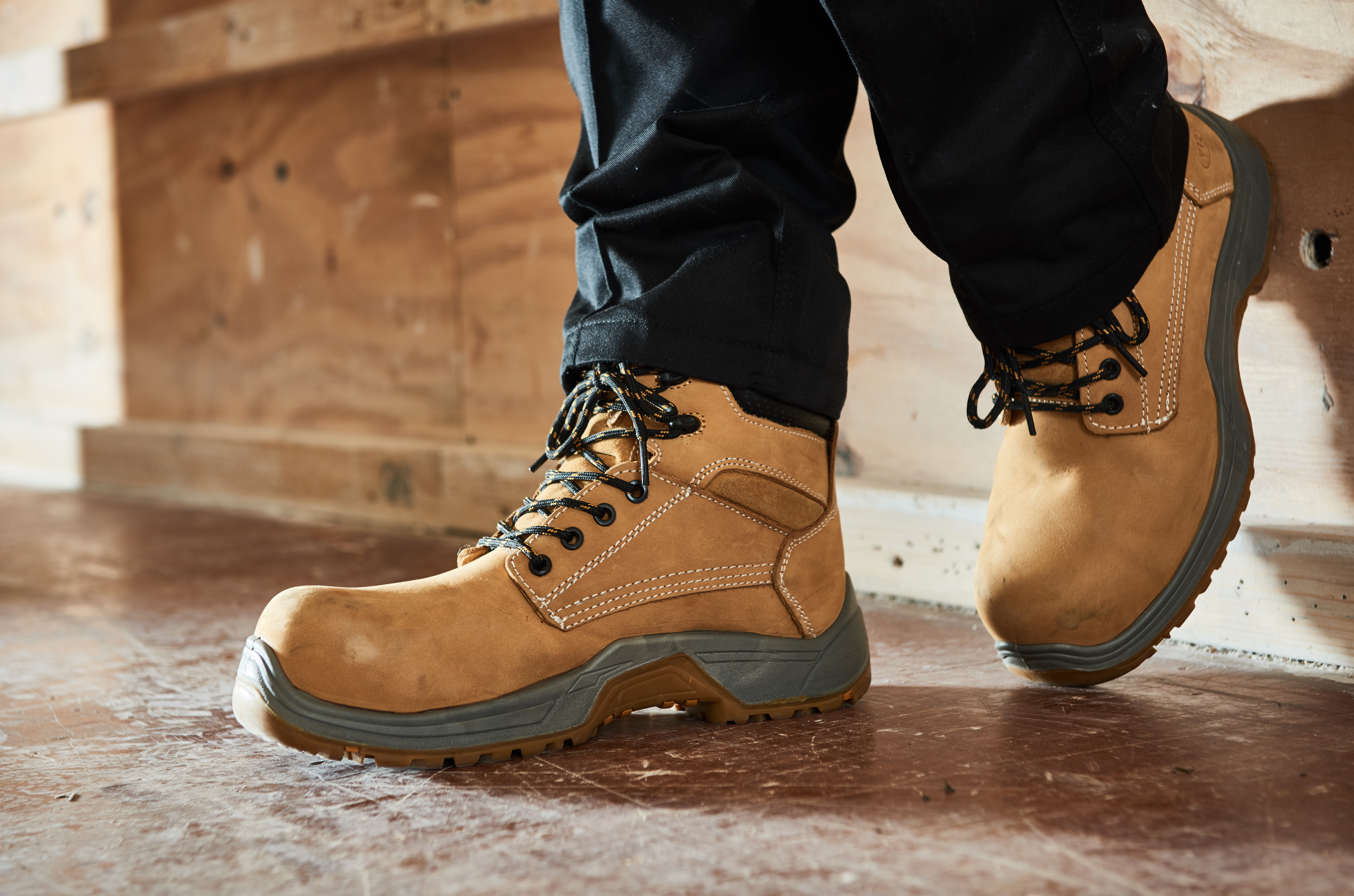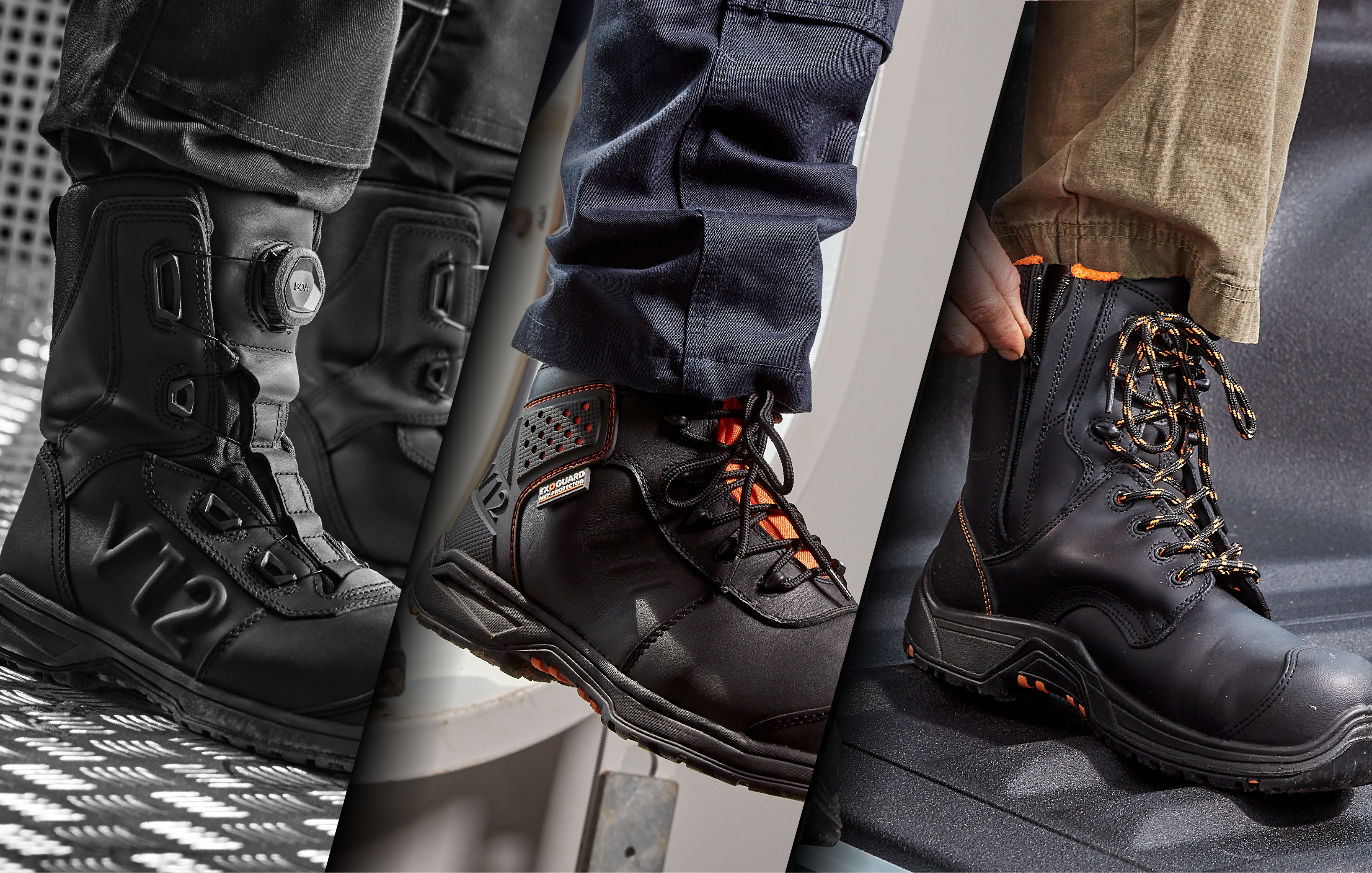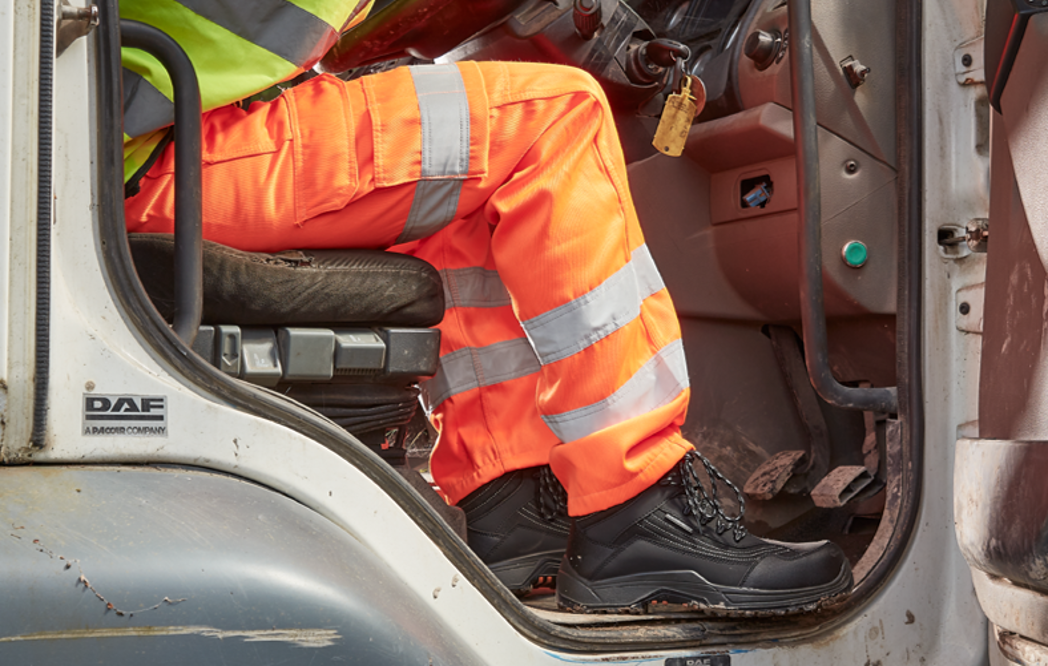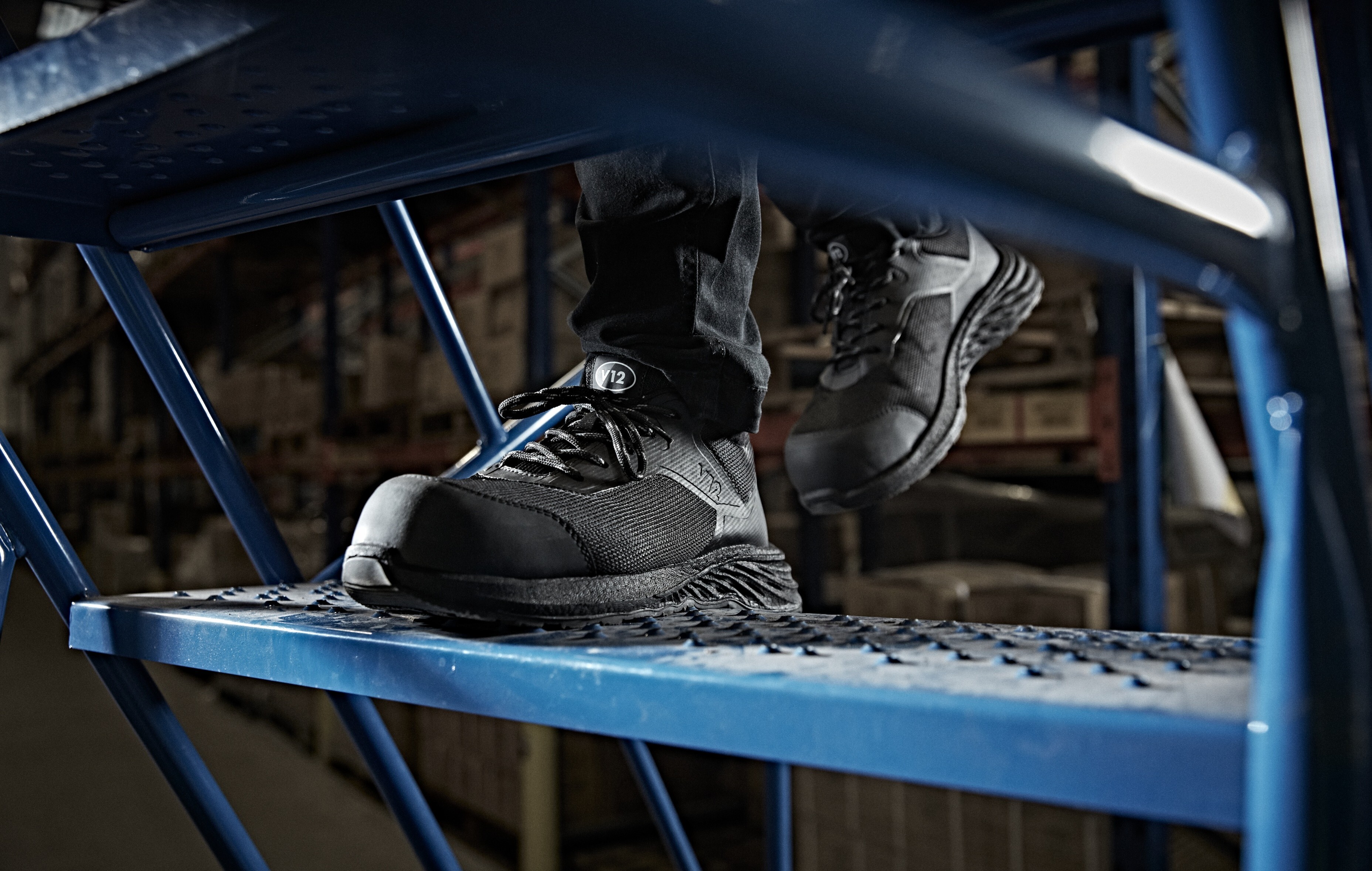For many safety footwear suppliers and wearers, S3 work boots have become the industry standard. But what exactly is an S3 boot, what does it protect the wearer from, and what job roles are they suited for?
In this blog, we provide a clear and simple break-down, so if you’re a safety boot wearer who wants some clarification, or you’re a safety footwear supplier being asked for guidance from your customers, we’ve got you covered.
WHAT DOES S3 MEAN?
The ‘S’ in S3 stands for ‘safety,’ while the number 3 denotes the 3rd category of the EN ISO 20345:2011 safety classes, and that the boot houses those particular protective features. The safety categories of the footwear standards run from SB – S5 in the 2011 standards, or SB – S7 if tested to the 2022 standards.
S3 SAFETY FOOTWEAR PROTECTION - THE BASICS
All S3 boots feature toe protection in the form of a toecap (tested to 200-joules) and basic slip resistance.
S3 safety boots are made to help keep the wearer’s feet dry from a certain level of water exposure thanks to a water-resistant upper. Note: water-resistant and waterproof are different. Read this blog to find out how.
An S3 boot must also have anti-penetration resistance, which means there is a steel or composite midsole to keep the underfoot safe from sharp objects.
S3 SAFETY FOOTWEAR – FEATURES YOU MAY NOT KNOW
.png?width=300&height=300&name=5%20(Octane).png) S3 boots must feature anti-static protection, which prevents electrostatic build-up and reduces the risk of electric shock.
S3 boots must feature anti-static protection, which prevents electrostatic build-up and reduces the risk of electric shock.
Question: Do you know the difference between anti-static and ESD? They might seem similar, but there’s a big difference – find out here.
They must also include energy absorption in the heel area, so the back part of the boot absorbs shock during walking, standing and carrying heavy items, reducing the impact on the wearer's lower limbs.
Finally, an S3 boot is designed with a cleated outsole, meaning it has deeper, protruding tread to give enhanced grip and traction on uneven surfaces.
Pictured: V1920 Octane IGS. With its water-resistant upper and strong midsole, this vegan-friendly hiker is a great example of a versatile S3 boot.
SO WHY WEAR S3 BOOTS?
 Pictured: The E1300.01 Defiant IGS, an S3 safety hi-leg designed by V12 Footwear specifically for the Oil and Gas industry.
Pictured: The E1300.01 Defiant IGS, an S3 safety hi-leg designed by V12 Footwear specifically for the Oil and Gas industry.
S3 boots are considered by many to be an effective ‘catch-all’ product because they’re foot safety ‘all-rounders,' offering protection, water resistance, high-performing grip, anti-static qualities and a series of added comfort features. As a result, they can comfortably straddle multiple industry roles.
But specifically, because of the:
Midsole protection
They’re suitable for job roles with surfaces that could feature sharp items that could pierce the sole and endanger the underfoot, such as Construction, Agriculture and Logistics and Warehousing.
Water-resistance
They’re suited to safety sectors where the wearer could encounter light and infrequent water exposure, such as outdoor Construction, Energy, Grounds Maintenance and Food and Beverage roles.
Note: an S3 boot can actually become waterproof, if it's developed with an additional waterproof membrane in its lining. Take a look at the safety spec information below on the tongue of the V2120 Lynx.
 Beneath the size details, we're informed it has been tested to the EN ISO 2011 standards, and is an S3 boot. But after this, it mentions 'HRO WR SRC' - the WR meaning it has had waterproofing properties added to it as a feature.
Beneath the size details, we're informed it has been tested to the EN ISO 2011 standards, and is an S3 boot. But after this, it mentions 'HRO WR SRC' - the WR meaning it has had waterproofing properties added to it as a feature.
Want to know what the rest of those letters mean? Head here for all the answers.
Anti-static protection
S3 boots will be important in Engineering and Manufacturing roles that produce electronic components, or environments where static electricity is generated by appliances or machines. Furthermore, industries such as Mining and Milling (where static charges might be in existence around explosive elements such as fuel vapor, coal dust or gas) might also require the wearing of anti-static or ESD footwear.
NOT ALL S3 BOOTS ARE EQUAL
You've just learnt the minimum protective and comfort features of an S3 boot. But depending on the design and innovation invested by the manufacturer, an S3 boot can give much more to the wearer than just the basic legal spec. Let's take a look at some examples...
Comfort innovations
Even though an S3 boot has a fixed set of safety specifications, there are still many ways that comfort can be enhanced. For example, if an S3 boot is designed on a generic last, it can lead to something of a lottery in terms of fit. However, V12’s boots are all built around their specialised comfort last, designed using over 4,000 foot scans of global male and female feet. As a result, they accommodate both wider and narrower foot shapes of both men and women, providing the most comfortable work boots, as well as protection from hazards.
Look below at the blue V12 specialist comfort last on the left, and now contrast it with a common generic last on the right in green, which is used to create so much footwear globally. Notice how contoured and sculpted the V12 last is, and compare it to the simplistic and shapeless generic last. Now think - which one more resembles a foot - and which do you think would be a better fit?

Additionally, the higher material on the back of a safety boot can often rub or chafe the calf when driving or ascending and descending ladders, so several V12 S3 boots feature a scooped or ‘cut-away’ collar, padded to promote comfort, but lowered at the back to eliminate this distracting and painful abrasion.
Shank
The shank (pictured below) is an unsung hero of a safety boot, but is often a component not included by manufacturers to save on cost. The shank is a small plastic strip embedded between the midsole and midlayer which maintains the stability of a boot. Without a shank, the boot – and so the foot - would over-flex during a step, and put stress on the bones in the feet.
![]()
Moisture-wicking material
If you’re a safety supplier who offers footwear from a manufacturer who understand the importance of comfort, you'll be making a big difference to your customers. Breathable footwear developed with sweat-free lining and anti-perspiration uppers for example, will allow safety boot wearers enhanced coolness and comfort on the 12,000 thousand steps they take on average each day by absorbing, then removing sweat from the boot.
COMFORT IS SAFETY
So, now you know everything there is to know about S3 boots. But importantly, you also know that an S3 boot – like any other S category footwear - can and should be more than just protection; comfort should be just as key. And so it's not just about getting an S3 boot - it's about getting the right S3 boot.
If you’re a safety boot wearer or a safety footwear supplier and you’re looking for an S3 safety solution with optimum comfort, head to the V12 Boot Finder, where you can stipulate your workplace hazards and footwear requirements - and receive our expert recommendation. Click below to get started.





